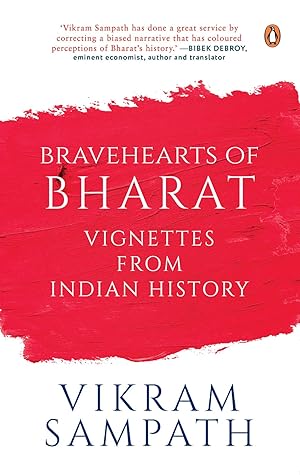More on this book
Kindle Notes & Highlights
Read between
May 12 - June 5, 2025
Every battle that we are taught about is one in which India or Indians have only lost. We are made to appear like a nation of losers.
Akshay Chugh liked this
but we also realized how precious little we knew about the few protagonists that we could list or how our education system had completely skipped these instances of victories and resistance.
History is after all the handmaiden of the victor. We had been handed down our understanding of our own past from our erstwhile colonial masters, which we had then further perfected with our own set of biases, political expediency and ideological tilts.
The fact that we are still surviving as one of the most ancient civilizations of humanity, and that our cultures, traditions, languages and religions have survived clearly indicates that there must have been strong resistance we always offered or some battles we decisively won as well, and this must have come from every region of this vast nation.
‘The early successes of Islam were against religions that had lost their hold on the minds of the people. But in India, the Hindu way of life—symbolized by high moral values of tolerance, truthfulness, and justice—was very much the part and parcel of the vast multitude’s mental and material being.’
This innate embracive and inclusive nature of the Hindu faith that allowed every strand of religious opinion, including atheism and agnosticism, as part of the fold made the Indian society that Islam encountered, one that was just, vibrant and adherent to its tenets.
The Indians are naturally inclined to justice, and never depart from it in their actions. Their good faith, honesty, and fidelity to their engagements are well known, and they are so famous for these qualities that people flock to their country from every side; and hence the country is flourishing and their condition prosperous.19
After the Arabs were defanged, it took nearly three centuries for invasions from the west, starting with the Turkish forces of Ghazni to even consider invading India and her frontiers. This speaks of the heroic resistance that was put up by the Indian powers against an expansionist, marauding global hegemony.
Lalitaditya Muktapida thus created a permanent niche for himself not only in the history of India, but that of Central and South Asia, positing the primacy of Kashmir as a political, spiritual, intellectual and cultural focal point that was integral to the subcontinent.
‘Hindus could have destroyed him [Mahmud] had they pursued him in his retreat … Hindus had lost [that vision]. Pursuit of a retreating enemy was contrary to the Rajput code of honour.’10 It was thus the application of moral codes of ethical military conduct with an opponent who neither believed nor honoured such protocols that cost the Indian forces heavily during various critical milestones of history. Mahmud thus lived on to inflict more misery on the country.
The unexpected massive rout that befell his army shattered Muhammad Ghori’s pride—more so since this defeat was wrought on him by a woman whom he had vastly underestimated. He fled from the battlefield with a handful of bodyguards to save his life. Such was the rude jolt he received from this battle that he never again turned towards Gujarat to conquer it and instead eyed the more vulnerable Punjab, making his entry through the Khyber Pass the following year. The wound of Gujarat remained with Ghori for long and it was later left to his slave Qutub-ud-din Aibak to avenge his master’s
...more
However, despite her stewardship in such a decisive moment in the annals of her kingdom, Naiki Devi is not credited much by any of the chroniclers, including the Gujarati poets (barring Merutunga). It is her infant son who is praised effusively for this rout of the Turkish forces that he so casually and playfully undertook! Far from acknowledging the sagacity and chivalry of the queen, even a mention of her name is not made in these accounts. And when made, it is done with utter condescension as the Chalukyan inscription does, stating that ‘even a woman’ could defeat the invading forces.
The magnificent Kohinoor diamond, too, came from here. It is rumoured to have been the eye of an idol in Warangal during the Kakatiya times. When the Kakatiya kingdom was attacked and ransacked by Malik Kafur, the general of the Delhi Sultan Allauddin Khilji in 1310 CE, he carried away the Kohinoor with him, and it later passed on to the Mughals as part of the Delhi treasury. It later changed hands again, reaching the Punjab rulers and finally the British monarchy, with whom it sits today.
This was perhaps one of the rarest of cases when a Hindu monarch adopted the same policy as the Muslim conquerors or rulers and demolished the latter’s place of worship, the mosque, quite like how countless temples had been desecrated. Kumbha was known to follow no ethical codes of warfare that the opponent did not believe in and replied to them in battle in the language that they understood.
This was a landmark war and a historic victory that an Indian force had registered so convincingly against a European power. Such was the blow that was dealt on the Dutch that their power collapsed thereafter, and they simply could not establish themselves in India and Kerala after that.
Like the Victory Column that stands anonymously, uncared for and uncelebrated in modern India, his place in scripting a unique victory of an Indian sovereign against a powerful European force, ensuring its total collapse thereafter from the country, though forgotten, remains cherished and worthy for all times to come.


